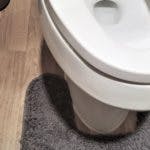A person needs their sensory system to work correctly to help them stay clean and dry related to poop and pee. We use our senses to identify when our bowel and bladder are full and need to be emptied, we manage our senses when we use the restroom by helping us be able to manage the sensations we perceive (like light, sounds, and smells), and then we tolerate the sensation of feeling pee and poop leave our bodies to allow that emptying process to happen. In children with Autism and Sensory Integration Disorders, the typical process of toileting is altered because of how the sensory system changes.
Children with Autism and other behavioral components may need guidance to learn how to tolerate things related to toileting that someone without these diagnoses may take for granted. Children with these challenges may benefit from guidance to learn how to tolerate being in a restroom, how to tolerate the process of washing hands, to understand that toileting is not a punishment or something specific that only they encounter.
It's important to understand that children with Autism and Sensory Integration Disorders encounter things in a unique way. A pediatric pelvic floor physical therapist has the skills to identify what areas a child needs help and guidance in related to normalizing toileting, and how pelvic floor physical therapy can help them improve their ability to tolerate the sensations of emptying their bowel and bladder.
Blog Articles



